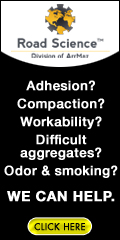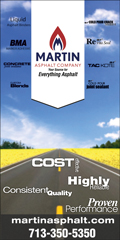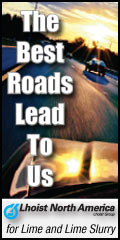| Thursday, March 31, 2016 | ||
 |
 |
 |
| Past Issues | www.texasasphalt.org | Printer-Friendly | Subscribe | Advertise |
Environmental, Health and Safety Brief for April
Safety
FYI...Remember to take down (on or around April 1) your OSHA 300 log that should have been posted beginning February 1.
OSHA Issues a Final Rule on Silica
On March 25, 2016, the U.S. Occupational Safety and Health Administration (OSHA) published its final silica rule in the Federal Register (Citation: 81 FR 16285 Page: 16285 -16890 (606 pages)). The rule, which lowers the permissible exposure limit (PEL) for respirable crystalline silica on job sites, will take effect on June 23, 2016.
Key Provisions
The final rule, Occupational Exposure to Respirable Crystalline Silica (Docket Number OSHA-2010-0034), also is designed to protect employees from exposure to silica dust. It includes provisions for assessing and controlling exposure, respiratory protection, medical surveillance, hazard communication and recordkeeping.
The final rule:
Compliance Schedule
The final rule is issued as two separate standards, one for general industry and maritime (including hydraulic fracturing) and one for construction. After both standards take effect on June 23, 2016, industries have one to five years to comply with most requirements, based on the following schedule:
What This Means to You
Under the new standards, employers will be expected to cut worker exposures in half in general industry, including hydraulic fracturing, and by five times in the construction field by the applicable deadlines. Industry strongly opposed the new PEL, contending it was unnecessary to protect workers, unfeasible in light of currently available technology and unsupported by scientific evidence. In some industries covered by the rule, it is not clear that technology currently exists to allow employers to meet the new PEL within the deadlines. As a result, an industry challenge to the final rule is likely. If such a challenge is filed, the compliance schedule may be stayed by the court that considers the challenge. Area of Impact to TXAPA Members Includes:
Click here for the final rule.
Environmental
Toxic Release Inventory Reporting (TRI) – Time to start collecting data for TRI reports to the TCEQ on or before July 1, 2016 for year 2015.
TRI Reporting Requirements
Your facility is required to report to the TRI Program if it meets ALL of these three threshold criteria:
Click here for the information on TRI Reporting.
Health
Noise Dosimetry – What is it?
Most of the operations in our industry either are or have the potential to expose our employees to excessive noise. To determine over exposure, a study that employs an instrument called a noise dosimeter is done. The dosimeter measures the total noise exposure to which the employee is exposed over an 8 hour time period. The data generated is used to produce a time weighted average (TWA) exposure value. If the noise levels exceed a time weighted average (TWA) of 85db (action level), then you are required to implement a hearing conservation program. This program will define how exposure to noise can be reduced to acceptable levels (accomplished through use of hearing protection such as muffs or plugs, but engineering controls are the preferred method. A combination of both can also be employed). The program will also involve initial and annual hearing testing among other requirements. |
Asphalt: Smooth | Durable | Quiet | Safe





